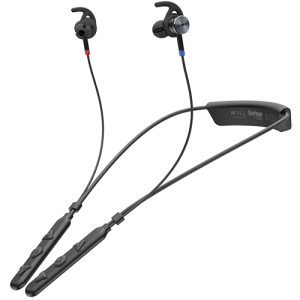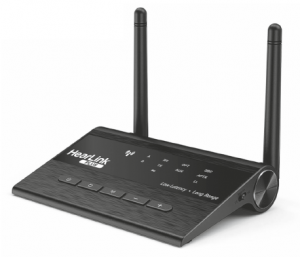Reducing the Curse of Isolation for People with Hearing Loss
by Dr. Alexander Goldin
♦ Social isolation is a fundamental health-related problem. This excellent article gives a lot of information about how social isolation may be related to hearing loss.
In these turbulent times brought on by the COVID-19 virus, lives of people with disabilities may be even more difficult than usual. Hearing loss greatly limits our ability to communicate. People with hearing loss often utilize other channels of information, such as lip reading, body language, and other visual cues, or even the sense of touch, to compensate for the lack of information typically received from a healthy auditory system. These days, such people may require live, face-to-face interaction with others much more than people with normal hearing. Isolation caused by preventive measures against spreading the virus deprives them of those additional information channels. While some of them can live almost normal lives in good times, compulsory physical isolation may significantly and disproportionately exacerbate their problems. It is a well-known scientific fact that hearing loss is a major health factor leading to social isolation, depression, cognitive decline, and premature dementia. If the hearing loss is not addressed in a proper and timely fashion this process of decline can accelerate rapidly.
Traditionally, hearing loss has been treated through the use of hearing aids. However, with less than 20% of hearing-impaired people in the U.S. using hearing aids, we can surely say that hearing aids have failed to provide a comprehensive solution. This is, mainly, due to 4 main factors:
1. Price: Hearing aids are extremely expensive
2. Social stigma: People don’t like hearing aids, thinking they make them look older or handicapped.
3. Limited functionality: Basic hearing aids provide hearing amplification only. Today, the most expensive, top-of-the-line hearing aids allow the wearer to make phone calls, but the quality of sound and the frequency range is still far from perfect.
4. Time to set up and tune: Hearing aids are distributed and tuned by professionals, requiring between 4-7 visits to get them adjusted properly.
In today’s reality of limited mobility and closed or restricted access to audiology services, the fourth factor is becoming a real bottleneck, even if the first three problems are somehow resolved (e.g., if high end hearing aids are distributed for free and people don’t care about how they look). For many people there is simply no way to get help. Hearing loss is not considered a life-threatening condition. Of course, it is not, but the consequences of not treating it are. The situation may become critical as cognitive decline may happen quickly and irreversibly for elderly people. We’d better not wait until too late and try to get them help ASAP.
We feel that our BeHear line of Personalized Hearing Headsets provides a good, comprehensive, and timely solution for quickly getting help for hearing loss these days. These hearables provide an advanced, no compromise, yet affordable, easily-to-operate, and fully personalizable hearing solution. And the great news is that personalization of our hearing amplification headsets does not require any professional service. It can be done easily by the user or his/her friends or relatives through a simple, intuitive, and free smartphone application.
Our BeHear hearing amplification headsets address all aspects of voice communication:

1. These hearables resolve difficulties of face-to-face communication between people confined inside their homes. Being able to communicate with a hearing-impaired person without raising your voice or, from the impaired side, without asking the speaker to talk louder, clearer, etc., may greatly reduce otherwise quickly accelerating stress and mutual antagonism. BeHear hearing amplification headsets can be a family peace saving option in many such cases.
2. Many seniors are prevented from communicating in person with their families and are relying on phone conversations to stay in touch. For those with hearing loss it is more difficult to understand phone speech because they do not have the visual cues afforded by in-person conversation. Also, phone amplification options and the sound quality of modern phones are limited. The sound options of mobile phones may also not allow suitable personalization. BeHear hearing amplification headsets resolve these problems by enabling mobile phone calls with high quality sound which is optimized for the user’s specific hearing loss. They can even slow down the voices of fast talkers, making them more intelligible, without asking them to do so.
3. People are watching more television these days. Being able to comprehend TV dialogue at normal volumes will be appreciated by other house dwellers / neighbors. When used with HearLink PLUS transmitters, BeHear hearing amplification headsets work as top-quality TV listening systems with personalized sound.

4. Stress is a big problem for people confined to a small space. Quiet, calm music is a great relaxation tool when you can hear it as it was meant to be heard. Unfortunately, hearing impaired people are often deprived of this. Listening and enjoying quiet music requires good hearing. Otherwise, people either cannot hear it, or it is too loud. There is simply no comfortable listening level. BeHear hearing amplification headsets can help resolve this difficulty, allowing people to reduce their stress.

5. Hearing better with BeHear hearing amplification headsets can help people avoid panic (typically the physical representation of fear, which is a result of feeling helpless or lacking self-confidence). When a person can hear and understand the guidelines for keeping safe they will be calmer, overall.
Last but not least, things may be getting worse in some cases and people may need to rush to hospitals. Even people actively using hearing aids rarely take them to hospitals as they are afraid of losing or damaging their very expensive devices. People without hearing help will experience difficulties in communication with the hospital staff, thus receiving unclear or inadequate treatment. The communication challenges are compounded if the staff are wearing face masks, concealing the physical clues that are useful for comprehension, and taking into account the general background noise which characterizes emergency rooms and hospital wards during a pandemic.
This situation may further increase mental stress and eventually lead or contribute to a well-known disorder called “delirium”, an acute disturbance of mental abilities. We believe that hearables from Alango BeHear can provide a hearing enhancement solution that is affordable, durable, and easy-to-use in hospital conditions.
The earlier people get help, the faster they recover, and the less it costs us as individuals and society in general.
To get our stories sent directly to your inbox, register here.
How to Alleviate Unnecessary Stress for the Elderly During the Pandemic
The Most Vulnerable Age Group to Catch the Virus is Also the Group Most Likely to Suffer from Hearing Loss

♦ Getting sick enough to see a health professional during these days of the Corona virus pandemic is stressful in its own right, but inability to hear the staff’s diagnosis or treatment strategy because you left your hearing aids behind is truly frustrating. What can be done?
While not being directly related, there is a strong correlation between the severity of symptoms for people infected with COVID-19 and hearing loss rates for different age groups. Both worsen quickly with age. Logically, this leads to a direct link between the number people being infected and admitted to hospitals, and the number of hospital patients with high levels of hearing loss.
Hearing aids are very expensive devices that are easy to lose and easy to fall into disrepair. Few people take their hearing aids with them when they rush to noisy emergency rooms, eventually limiting their abilities to communicate with the hospital staff and get the proper treatment. Not being able to hear and understand the situation also contributes to a condition called “delirium” which is an acute disturbance of mental abilities. This hospital-induced delirium typically results from the combination of stress from poor health, disorientation from being in an unfamiliar environment with strangers, disruption of routine, and absence of familiar faces.
We believe that Alango Wear & Hear products can provide a hearing enhancement solution that is affordable, durable, and easy to use in hospital conditions. It is also multi-functional, allowing patients to better understand the medical staff, communicate over the phone, enjoy music, and watch TV.


The BeHear ACCESS headset can be paired with HearLink® PLUS, a Bluetooth® transmitter that streams audio directly from the television’s analog or digital (optical) sound source to the viewers ears. Ambient noises, room reverberation, and other types of sound interference which hamper intelligibility of speech and music appreciation are eliminated. Other residents of the hospital ward (or household) will appreciate the fact that the TV volume doesn’t disturb them. The transmitter pairs seamlessly with Wear & Hear assistive hearing headsets, ensuring that each viewer benefits from personalized audio that can be fine-tuned in real-time using the dedicated W&H BeHear smartphone app.
To get our stories sent directly to your inbox, register here.